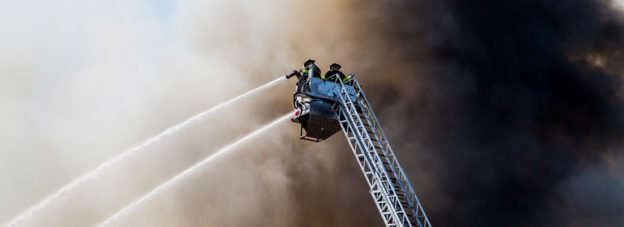On January 23, 2018, the Northern District of Indiana issued a decision that clarifies what constitutes spoliation of evidence under Indiana law. In Arcelormittal Ind. Harbor LLC v. Amex Nooter, LLC, 2018 U.S. Dist. LEXIS 10141 (N.D. Ind.), the defendant filed a motion for sanctions, alleging that the plaintiff intentionally spoliated critical evidence. The defendant sought dismissal of the action, asserting that the plaintiff intentionally discarded and lost important physical evidence within hours of a fire that occurred while the defendant’s employees were performing work at its facility. The decision underscores the importance of taking immediate action to properly identify and secure potentially material evidence in order to satisfy one’s duty to preserve pre-suit evidence and avoid any spoliation defenses and associated sanctions.
In Arcelormittal, the court initially considered whether to apply state or federal law when analyzing a litigant’s duty to preserve pre-suit evidence and determine if that party committed spoliation. Since the case was brought in federal court based on diversity jurisdiction, the court held that Indiana state law governed the spoliation analysis.
As noted by the court, under Indiana state law, “the intentional destruction, mutilation, altercation, or concealment of evidence” is considered to be spoliation. Thus, under Indiana law, a party who knew or should have known that litigation was imminent “may not lose, destroy or suppress material facts or evidence.” The plaintiff argued that Indiana law requires a showing of improper purpose or bad faith to establish that a litigant spoliated evidence. The Arcelormittal court rejected the plaintiff’s argument.
To determine whether the plaintiff spoliated evidence and, if so, the appropriate sanction, the Arcelormittal court delved into a considerably detailed discussion of the particular facts that gave rise to the spoliation at issue in the case. Initially, the court assessed whether the plaintiff’s investigation, which commenced less than two hours after the fire, was thorough and involved sufficient efforts to secure the fire scene, as well as a gas valve and piping that were central to the investigation. The court found the investigation to be lacking in several respects.
As stated by the court, the plaintiff failed to follow a formal protocol, its photographic documentation of the fire scene was “random,” and no notes, diagrams, or measurements were recorded. The court also noted that, in addition to failing to provide the defendant access to the fire scene before it was altered, plaintiff took no affirmative action to preserve the physical evidence which was discarded and subsequently retrieved from the garbage bin approximately 200 feet away from the fire scene. Even after retrieval, the evidence wasn’t tagged or otherwise processed appropriately. Although the evidence was, purportedly, placed in a conference room where the defendant met with the plaintiff’s employees after the fire occurred, the defendant denied being provided the opportunity to inspect the physical evidence before it was moved to the plaintiff’s office, where it mysteriously disappeared a few hours later.
The defendant’s expert opined that the missing physical evidence could have contained critical information relevant to performing his origin and cause investigation. The expert further opined that the plaintiff’s own investigation materials were inadequate to enable the defendant to conduct its own investigation.
After setting forth the facts, the court performed a totality of the circumstances analysis and concluded that the plaintiff intentionally “destroyed, concealed or lost critical physical evidence.” In conducting its analysis, the court considered the sophistication and experience of the plaintiff’s business, the regular personal injury hazards posed by its normal operations and the extent of the involved property damage and personal injuries. Focusing on whether the litigation was foreseeable, the court found that plaintiff knew or should have known that a resulting lawsuit was imminent at the time the evidence was disturbed.
After the court determined that, indeed, the plaintiff committed spoliation, it then determined the level of culpability associated with the plaintiff’s conduct. The court held that the plaintiff acted intentionally as opposed to negligently. However, even though its conduct was deemed to be intentional, the court refused to dismiss the plaintiff’s complaint, as proposed by the defendant, in part, because of its extreme effect.
Ultimately, the court exercised its discretion and imposed a sanction whereby the defendant was allowed to instruct the jury that they could conclude that the spoliated evidence would have been unfavorable to plaintiff. Additionally, the court allowed the defendant to instruct the jury to consider and review evidence from all parties about the physical evidence that was not preserved and how the defendant was prejudiced by the plaintiff’s actions in that regard.
The Arcelormittal case is particularly instructive because the Northern District of Indiana articulated what factors it considers when determining whether a party has spoliated evidence.
For subrogated insurance carriers, because the insurer is subject to any spoliation sanctions that are imposed against its insured, it is critical to issue thorough and prompt instructions to policy holders to ensure that they do not commit spoliation. Accordingly, if an insured knows or should know that litigation is imminent, it must preserve certain evidence.
When it comes to evidence preservation, subrogation professionals must understand the importance of how to avoid spoliation allegations, and the consequences of failing to do so. In many instances, insureds are not sophisticated enough to properly safeguard evidence. Accordingly, it behooves the insurer to provide adequate directives to the insured and promptly deploy a team of individuals who can properly preserve the salient evidence and secure the scene. This can be a complex endeavor that may require the erection of fences, providing security personnel or taking other measures to ensure that a loss scene is preserved. To avoid any miscommunications or a premature release of the scene, it is also good practice to confirm preservation-related instructions in writing and inform other individuals involved with the claim of such instructions.

